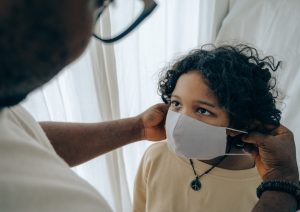LatinaLista — Within the last year, headline after headline has made it clear that the greater Latino community is at high risk, in some cases, higher risk, for certain health issues than the rest of the population. The biggest tragedy is that most of these issues are preventable — if people were getting the information they needed.

Lead poisoning is one of those health issues that can have a happy ending if families knew more about it and how to safeguard their children and themselves from it.
The trouble is not too many of la gente know about it.
For that reason, in an effort to raise awareness of the consequences of lead poisoning among parents and pregnant women, the Coalition to End Childhood Lead Poisoning, the U.S. Environmental Protection Agency (EPA), and the U.S. Department of Housing and Urban Development (HUD) have partnered with the Ad Council to create public service announcements about the condition.
Yet, that alone isn’t enough. In the following post, Hector Moreno of the Coalition to End Childhood Lead Poisoning, explains the dangers of lead poisoning and why Latinos should care about it.
Lead poisoning is a health hazard that is not widely known among Latino families; however it is one that affects more than 1 million children living in the United States today.
Lead poisoning has terrible effects on young children. If not detected early, children can suffer from damage to the brain and nervous system, behavioral and learning problems, and slowed growth. In extreme cases lead poisoning can cause comas, and even death.
Pregnant women are also at risk of getting lead poisoning. If exposed to lead, pregnant women have a greater chance of miscarriage or have a premature birth and, if brought to term, their child is more likely to experience developmental problems later in life.
It only takes the equivalent of three granules of leaded dust to poison a child. How much is that? Grab a sugar packet next time you get your morning cafecito and pour it out on a flat surface. Try to pick up three granules. Ingesting that tiny amount is enough to irreversibly harm a child, as there is no cure for lead poisoning.
Lead is most frequently found in homes built before 1978 and is likely to be found on painted surfaces such as windows, doors and trim, and walls. Exposure to lead is most common through activities that cause painted surfaces to create dust or flake such as renovations or cleaning. There are an estimated 38 million homes containing hazardous lead today.
However, the good news is that lead poisoning is 100% preventable when you know what to do to protect your family from lead.
Here are some simple steps you can take to help keep them lead-free:
• Inspect your home and where your child plays and learns for potential lead hazards;
• If your home was built before 1978 and you’re unsure if your home contains lead hire a certified lead inspector to check;
• Wash your child’s hands, bottles, pacifiers and toys frequently. Especially if they’ve fallen on the floor;
• Use cleaning methods that won’t disturb painted surfaces;
• Make sure your child is eating a healthy diet that is high in iron, calcium, and vitamin C and low in fat;
• If you’re tackling a do-it-yourself project make sure you renovate right and take the necessary precautions to protect your family; and
• If you’re hiring a contractor to fix any painted surface, federal law requires that they follow specific practices, so always ask to see the contractor’s certification before you hire them.If you followed all of these steps and you’re still unsure if your child have been exposed or has lead poisoning, the number one thing that you can do is ask your child’s pediatrician to do a lead test. Your health insurance should cover the test and it usually involves just taking a small blood sample. If you lack health insurance, visit your community health clinic which can perform the same test for free.
We need your help in spreading the word about the dangers of lead poisoning and we ask that you please join us in the conversation on Facebook and Twitter. There is also a website that you can find all of this information and more in both English and Spanish. With your help we can help to keep all children lead safe.
Hector Moreno is an environmental assessment specialist for the Coalition to End Childhood Lead Poisoning.




